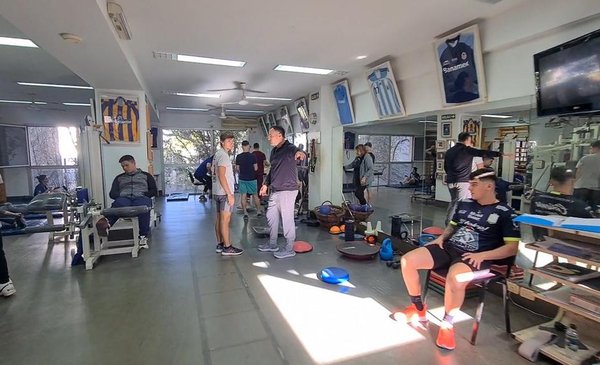“The best shoes are the most comfortable.” This sounds like a marketing phrase (and may be part of some shoe ads), but it’s true. When exercising or doing any type of physical activity, choosing the right shoes is essential. Given this, in recent years, its relationship with injuries has been “overestimated”, as stated, in an interview with EL DIA, Dr. Vicente Paus, Medical Director of the Sports Clinic.
There is something hidden behind this “exaggeration” of the relationship between sneakers and injuries. Namely, besides the effect of athletic shoes on tears, there are real reasons that can cause health problems. For example, the specialist points to the idea of “belonging” to a running group and the difficulties this presents when running without respect for each person’s performance.
In this regard, women are not like men, and all people should not be treated the same way regardless of their age. “Women have a hormonal factor that greatly facilitates so-called ‘stress fractures.’ “It is fashionable today for women over 40 to start running in amateur groups, but there are female runners who have been competing for three or four years,” said the medical director of the sports clinic. .
“Medicine is in trouble”
Given this, the specialist believed that “medicine is in trouble” because there are professionals who “do not take the time to listen to patients and review them fully.” So, before exercising or engaging in physical activity, “the most important thing is to visit your doctor. As a first action; Then your cardiologist advised you to do all pre-competition studies.
According to the specialist in the field in question, some professionals from the new generations of doctors also do not take the time to “completely undress” patients in order to conduct comprehensive medical monitoring. “This is the key to what is currently happening,” Baus admitted, referring to steps that were omitted that could lead to a wrong medical diagnosis.
What happens is that these “half-hearted” examinations tend, to some extent, to cause a lack of clarity of the problem on the part of the patient. Furthermore, the relationship between athletic shoes and the incidence of injuries has been overstated, thus prioritizing shoes that provide anti-slip “superpowers.”
“When patients arrive at the clinic, they ask us: What shoes do I need?” When we answer them, we ask them to take off their clothes so we can watch them closely, and they look at us with some confusion. They answer: No, Doctor, I came to buy shoes. But, as a specialist, I need to see them from head to toe so I can interpret the patient’s morphology, whether he has scoliosis, kyphosis, height discrepancy (one foot is shorter than the other) or any pelvic abnormality.”
In fact, patients’ attention is focused on what to wear on their feet and the purpose of searching for the perfect shoes is ignored. “The best shoes are the ones that are most appropriate for each patient or each runner,” Baus explained. “The most important thing is to avoid injuries that occur while running, rather than just talking about shoes, because shoes do not prevent injuries while running.”
Scientifically, there is no evidence that athletic shoes themselves cause injuries. However, there are incidents of its use. In fact, in an article (entitled: “Myths and Reality of Running Shoes”) by the aforementioned doctor and his colleague Ariel Graebe, MD, a physician in the Department of Walking at Clinica del Deporte, they both point out that shoes “can increase energy expenditure and cause unbalanced muscle activity to achieve a running pattern.” Movement (when walking or running). “This indirectly modifies the repetitive load absorbed by the tissue, lowering the injury threshold.”
In other words, medical professionals talk about how certain athletic shoes affect and cause some type of discomfort so that they can run or exercise the way everyone does. This can affect the movements you make when you exercise or engage in physical activity, which may increase your risk of injury.
Before you know what to wear on your feet
“In practice, the important thing is to be able, through a global examination, to identify the deficit that the patient suffers from,” Vicente Paus analyzed. From this standpoint, the medical study before knowing which shoes to use consists of reviewing even the smallest details.
“There are people who have one foot that is flat (turned in) on one side and the other is neutral (normal). So, we can’t ask you to go and buy two sneakers. “You have to do a good gait study, photograph the patient and do a muscle measurement,” the doctor explained.
“Although shoes with motion control technology seem to be a good option for hyperpronate feet, we recommend that all gait corrections be made through a biomechanical study of walking and running, and the creation of custom orthopedic insoles,” they added in the article. .
According to what the specialist Baus commented, there are also “length differences” (one foot is shorter than the other) that are reviewed using a panel. On the other hand, it must be taken into account if there is an “irregularity” between the heel and the sole. Therefore, what is important in this case is to conduct a study of the biomechanics of the patient’s movement (see how they run or walk). This means leaving the X-ray or MRI rooms and being able to see people exercising, in order to see the “deficit”.
In the article written by the two mentioned professionals, they also talk about that “sole stiffness does not seem to modify the incidence of injuries, and can be selected according to the athlete’s comfort or performance.”
For plantar fasciitis and other conditions
While specialized shoes, such as maximal (high-top) shoes and stability shoes, may not prevent running injuries, some doctors say they sometimes recommend them for patients with certain types of pain or injuries. For example, if you have arthritis, plantar fasciitis, or other types of foot pain, shoes with a higher limit, especially those with rocker rubber soles, will work well for running or walking, as there is some evidence that they will reduce pressure. Feet, as well as the demand on the ankles and Achilles heels will be reduced.
Especially in cases of plantar fasciitis, it is important to know that if you walk barefoot or wear sneakers or very flat shoes, the pain may worsen. Even wearing old shoes can also cause this because they lose their ability to protect and support the feet over time. In fact, it’s best to choose a new pair of running shoes with a thick, well-padded sole. Meanwhile, if you suffer from flat feet, it’s important to choose a pair that has good arch support.
“The best shoes are the ones that fit each patient or each runner,” Dr. Baus said.
Scientifically, there is no evidence that athletic shoes themselves cause injuries.
“In practice, the important thing is to identify the patient’s deficit,” Dr. Baus said.





